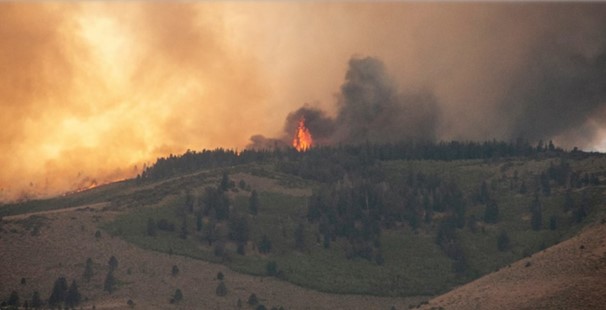
Forest Fires Nearly Doubled in 20 Years, Contributing to 33% of Tree Cover Loss: Report
A recent analysis by the University of Maryland reveals that the frequency of forest fires has nearly doubled over the past two decades, with an average annual increase of 5.4% in burned areas. Forest fires are increasingly widespread and now account for 33% of global tree cover loss, a figure that has nearly doubled from two decades ago.
The study, which examined data from 2001 to 2023, links this dramatic rise in fires to climate change. The increasing frequency and intensity of extreme heatwaves and drier conditions are making forests more vulnerable to fires. The year 2023 was particularly devastating, with around 12 million hectares of forest burned, setting a record for fire-driven tree cover loss. Notably, wildfires in Canada during 2023 were responsible for approximately 65% of the global tree cover loss caused by fires.
Impact on Northern Boreal Forests
Forest fires impact all types of forests, but the Northern Boreal forests, or Taiga, face particularly severe consequences. These forests are crucial for global carbon storage, and their degradation has significant implications for climate change. The release of large amounts of carbon dioxide from burned forests exacerbates climate change, creating a vicious cycle: as the climate warms, the likelihood of more frequent and severe fires increases, leading to further carbon emissions and forest destruction.
The Northern Boreal forests, which span about 12 million square kilometers, play a vital role in absorbing and storing carbon. This biome, found in Canada, Russia, Sweden, Finland, and parts of Norway, is characterized by coniferous trees like spruce, pine, fir, and larch. These forests endure harsh climates with freezing winters, cool summers, and low precipitation, mostly as snow. The forest floor supports a rich array of mosses, lichens, and shrubs, providing habitat for diverse wildlife.
The ecological functions of these forests are critical. They act as significant carbon sinks, mitigating climate change by sequestering carbon dioxide from the atmosphere. However, as the frequency of forest fires increases, there is a growing concern that these forests could transition from carbon sinks to carbon sources, further amplifying climate change.